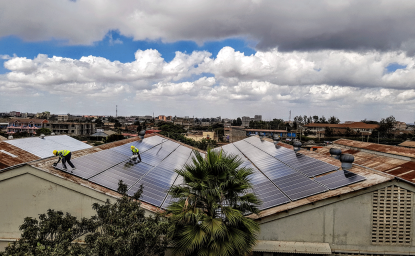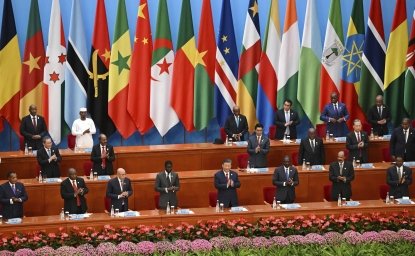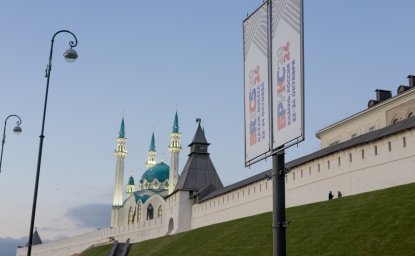
A blog of the Africa Program
The State of Food Security and Nutrition in the World 2019 released on July 15th is quite alarming. The joint annual report finds that the number of people suffering from hunger or undernourishment continues to increase. This increase has occurred for the past three consecutive years, putting an end to a decade of progress in the global battle against hunger.
According to the report, more than 820 million people did not have enough to eat in 2018. The situation is particularly appalling on the African continent, where 20 percent of its population was food insecure. This state of facts raises questions on the ability of the global community, in general, and African countries, in particular, to achieve the global target of "Zero Hunger" by 2030.
How come most African regions are still far from moving their populations out of undernourishment? While the response to this question is complex, the case of the Central African Republic provides a concrete illustration which can offer a glimpse into the issue of hunger in Africa.
The situation of the CAR has been one of the most puzzling ones when it comes to food production, food insecurity, and malnutrition. A landlocked country located at the heart of Africa, surrounded by Cameroon, Chad, Congo-Brazzaville, the Democratic Republic of the Congo, South Sudan, and Sudan, the CAR presents one of the most favorable agro-ecological conditions for agriculture activities in Sub-Saharan Africa.
With its population estimated at 4.8 million over a territory of 623,000 square kilometers (240,534 sq. miles), the CAR is one of the most sparsely populated countries in the world with barely 20 people per square mile. With the potential for cultivable land estimated at 15 million hectares, scarcely one million are used. The country's geographical location entrusts it with an interesting climatic diversity and extremely diversified vegetation, ranging from dense forest to savannah.
The country enjoys a good temperature and ample rainfall in terms of quantity and duration annually. It is also endowed with an excellent hydrographic network offering the possibility for irrigational agricultural practices in large parts of the country.
Just like in many African countries, the agricultural sector constitutes the backbone of the CAR's national economy. Involving 75 percent of the active population, its contribution to the national wealth has been more than half (around 55 percent) of the country's gross domestic product (GDP). More than 70 percent of the population depends on agriculture for their incomes and livelihood. Subsistence farming remains the dominant form of agricultural activities.
With the CAR well-endowed with natural resources (land, water, good vegetation) and favorable climate, the expected narrative would be that of a country with almost all the population food secure and agricultural-driven poverty reduction. Paradoxically, the country is far from that. The FAO estimates that as of June 2019, the number of people severely food insecure is at 1.81 million. This is an increase of approximately 15 percent over the last two years.
Why is the Central African population suffering or possibly dying from hunger on the vast, fertile land entrusted to the country? The story behind this defect is undoubtedly complex and multidimensional. Two major factors seem to account for it substantially.
In recent years food insecurity has been worsening because of the armed conflict in the country. The protracted armed conflict began in December 2012. Destruction of villages accompanied the conflict and provoked the migration of a considerable part of the rural population. The impact on their lives and livelihood is massive. Even those who found refuge near their villages feared to return to their farms for losing their lives. In addition, the intercommunal violence revived tensions between farmers and herders. The unrest in the CAR affected the food production system and the food distribution efforts by humanitarian organizations.
Another factor to consider is the issue of governance. For decades, the CAR has been manifesting signs of a failing state. The institutional weakness and bad governance as well as the effect of imposed measures like the World Bank and International Monetary Fund's Structural Adjustment Programs (SAPs) left rural areas without public services and hindered the development of agriculture in the country.
The dominant type of farming is subsistence agriculture. Even though agricultural extension services have allowed some African countries to improve their agricultural productivity and reduce rural poverty, these services have been barely used in the CAR. Left without technical, financial, or material support, the majority of farmers continue to use rudimentary agricultural techniques.
A thorough reform and development of the agricultural sector in the CAR is therefore urgently needed. With the help of some international organizations,[i] the Central African government is striving to reorganize and reinforce the agricultural sector. Local non-governmental organizations like Calebasse and Kousala ti Yaka na ti Batanga Soussou (KYBS), and international non-governmental organizations, have been working with farmers to revamp the food production system in the country.
If "Zero Hunger by 2030" remains a global target, there is a need for the government and the friends of the CAR to bring in more coherent, consistent, and substantial efforts to the agricultural sector. Many success stories on the continent and beyond can also inspire efforts to unlock the supreme economic and nutritional potential of agriculture in the CAR. Hope is, therefore, allowed.
Fr. Paterne Mombe is a doctoral student at Tangaza University College in Kenya, where he studies social transformation with a specialization in sustainable development. He is also a Southern Voices Network for Peacebuilding Scholar for the fall 2019 term.
[i] The organizations working closely with the Central African government on the problematic of agriculture include the Food and Agriculture Organization, World Food Programme, United Nations Development Program, Agence Française de Développement, EU Bekou Trust Fund, etc.
Francklin Kamba and Shiqiang Wei, "Obstacles in Central African Agricultural Development and the Future Prospects," Advances in Social Sciences Research 3, no. 7 (2016): 15- 23. https://journals.scholarpublishing.org/index.php/ASSRJ/article/view/2080.
Henri Ouikon, "Problématique de développement agricole en République centrafricaine et perspectivesde recherche," HAL, no. 00143370 (2007): 1-6. https://hal.archives-ouvertes.fr/hal-00143370/document.
Author

Graduate Student, Tangaza University

Africa Program
The Africa Program works to address the most critical issues facing Africa and US-Africa relations, build mutually beneficial US-Africa relations, and enhance knowledge and understanding about Africa in the United States. The Program achieves its mission through in-depth research and analyses, public discussion, working groups, and briefings that bring together policymakers, practitioners, and subject matter experts to analyze and offer practical options for tackling key challenges in Africa and in US-Africa relations. Read more





